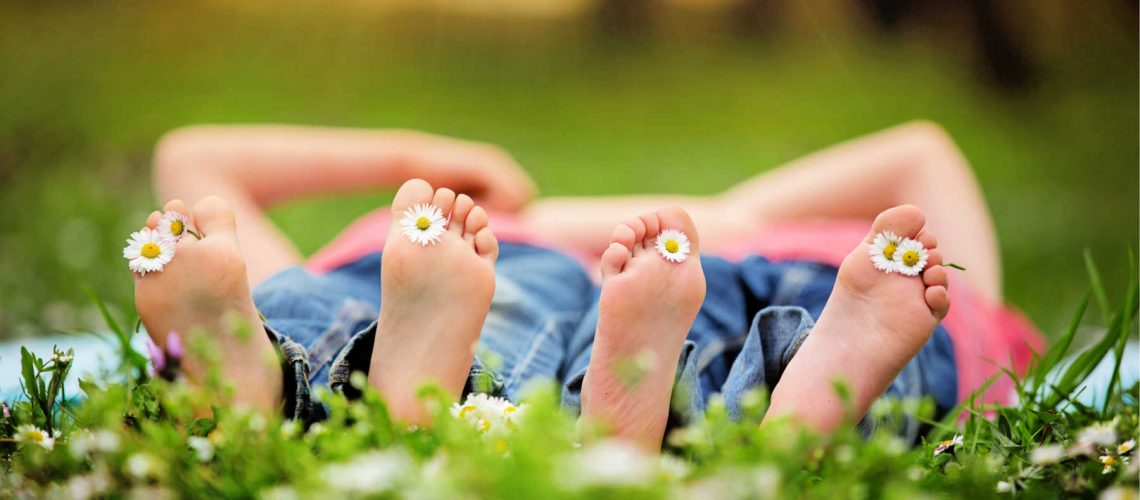From a very young age, my eldest daughter complained about pains in her ankles and calves. These usually occurred at bedtime. Initially, we were told she had growing pains. We gave her pain relief, massaged her ankles, and sat with her until she fell asleep. However, these pains kept happening. I can remember clearly the day I took her back to the Doctor after multiple visits and asked for a deeper assessment. It was at this point we were given a referral to a children’s podiatrist which was life-changing for us. If only we’d known earlier that this was the right specialist to see, we could have avoided years of pain. We asked Susan Reid, a podiatrist from Prime Health Podiatry to give us some expert advice on when you should take your child to see a podiatrist. Here’s what she said.
Look for signs of pain or discomfort
Young children aren’t always able to tell us about feet or leg pain which they might be experiencing. It’s important to be aware of any signs or symptoms which may indicate there’s an issue requiring attention. Change and growth is a normal part of a child’s foot and leg development, and as parents, it’s often difficult to know what’s normal, and what’s not.
Whether it’s the shape of your child’s foot, your child wanting to be carried rather than walking themselves, or hours of crying at night due to leg pain. There are many reasons to have a Podiatrist examine and assess your child’s feet. Podiatrists are university trained and APHRA registered Allied Health Professionals. They specialise in the diagnosis, treatment, prevention, and management of medical conditions and injuries of the foot, ankle, and lower limb.
1. Gait abnormalities and balance issues
Are you seeing, increased tripping and falling, generalised clumsiness, or an awkward walking pattern? These are just some of the issues seen in podiatry clinics. Maybe you have concerns regarding your child showing signs of an intoed (pigeon-toed) gait? Your podiatrist will determine if the turn is occurring at the level of the hip, leg or foot, and how best (if at all) to manage it.
2. Foot and lower leg pain
Growing pains are largely a myth, however some pain can be associated with certain ages during growth periods. In any case, pain is NEVER normal, and should always be assessed by your podiatrist. Some issues such as Calcaneal Apophysitis (Sever’s Disease), which causes heel pain in young and physically active people, are self-limiting. This means as the bones change and develop the problems usually resolve themselves. However, if the pain is causing limitations to activity levels or disruption to everyday life, then intervention is needed. This will allow your child to return to sport and other activities without the pain. In some cases, the podiatrist may order x rays or ultrasound scans, and may even refer, via the GP, to other specialists if required.
3. Dermatological issues
Children can develop problems with the skin and nails on their feet. Some of these include ingrown toenails, plantar warts, excessive sweating (hyperhidrosis), callouses, and athlete’s foot (tinea). Correct diagnosis is important to develop an effective treatment plan to have these issues resolved with a minimum of fuss. Leaving problems such as an infected ingrown toenail can result in a more difficult and painful condition to treat, and surgical correction may be the only option. Early intervention is always the preferred option.
4. Flat feet
It’s often quite normal for a young toddler to have a flat foot and a ‘padding’ gait. As they grow and develop, the foot forms its natural arch and the ankles straighten. Your podiatrist can assess your child’s gait pattern, and check they’re reaching their developmental milestones. Improvements in footwear may be the only intervention required, however, in certain cases, an orthotic may be prescribed. Your podiatrist may note a concern regarding the biomechanics of the feet and the impacts this may have on the development of the lower limb.
5. Curly toes
Occasionally a child will present with minor toe deformities, with the smaller toes either over, or under riding, the toes adjacent. This can, in some instances be a genetic factor. You can see it running through the various generations in the family. Sometimes it can be a result of tight socks and bodysuits in babies or tight shoes in older children. It can be alarming how quickly young children grow, and it’s important to always check the fitting of clothes and socks every few weeks, and replace them with a larger size when in doubt. It’s a good idea to measure children’s feet every time they are being fitted with new shoes. Pay particular attention to the width as well as the length.
Children’s podiatrist
Whatever concern you have we are here to help. We understand just how important feet are, after all, they carry you for all of your life! Getting the right advice and treatments will support you and your child to a healthier, happier future. Visiting a children’s podiatrist will take the guesswork out of the equation.
Contributor:

Prime Health Podiatry | Your family podiatrist
Susan Reid – Business Owner
Description: Prime Health Podiatry believes that everyone deserves an exceptional family foot health service. Susan strives to provide the highest level of care for all patients, of every generation. Your family’s foot health is important in maintaining a healthy and active life. From the littlest to the biggest, the youngest to the oldest, we are here to take care of all the feet in your family.
Phone: 0417241644
E: primehealthpodiatry@bigpond.com
W: https://www.primehealthpodiatry.com.au/



















